CarEdge saved me over 4,500 dollars on a brand new Honda Pilot. I can't say thank you enough.
Price intelligence
Find a wide range of vehicle listings with market insights on new and used listings near you.


Help us personalize your CarEdge experience — it only takes a second.
Your answers help us personalize your CarEdge journey — we’ll follow up with tips and next steps that match your buying timeline.
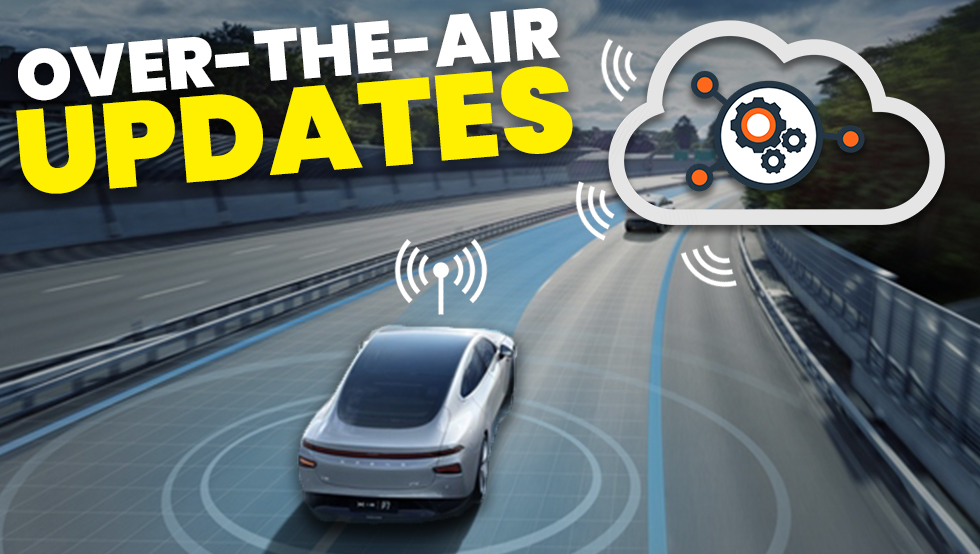
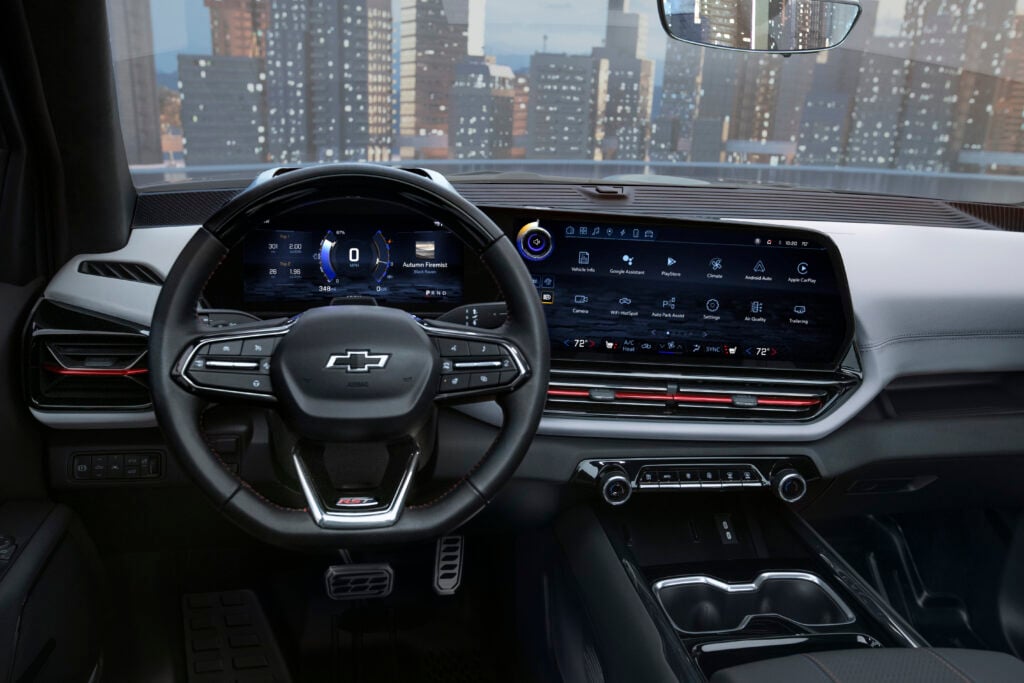
At what point does a car become more of a computer on wheels? Computer integration in the automotive industry is nothing new, however it’s accelerating at breakneck speed. Both software and hardware become outdated in no time at all. Is there a way for car buying habits to steer clear of the two-year replacement cycle that smartphones have fallen into?
As soon as computers grew wheels (in the form of electric vehicles), forward-thinking automakers launched over-the-air (OTA) update capabilities. Tesla was the first to do it, and now the likes of Ford, GM and Volkswagen are among the legacy OEMs marketing their vehicles as OTA-ready. Although, not all who’ve tried it have succeeded without hiccups. Here’s how OTA updates are changing car ownership, and what’s to come in the years ahead.
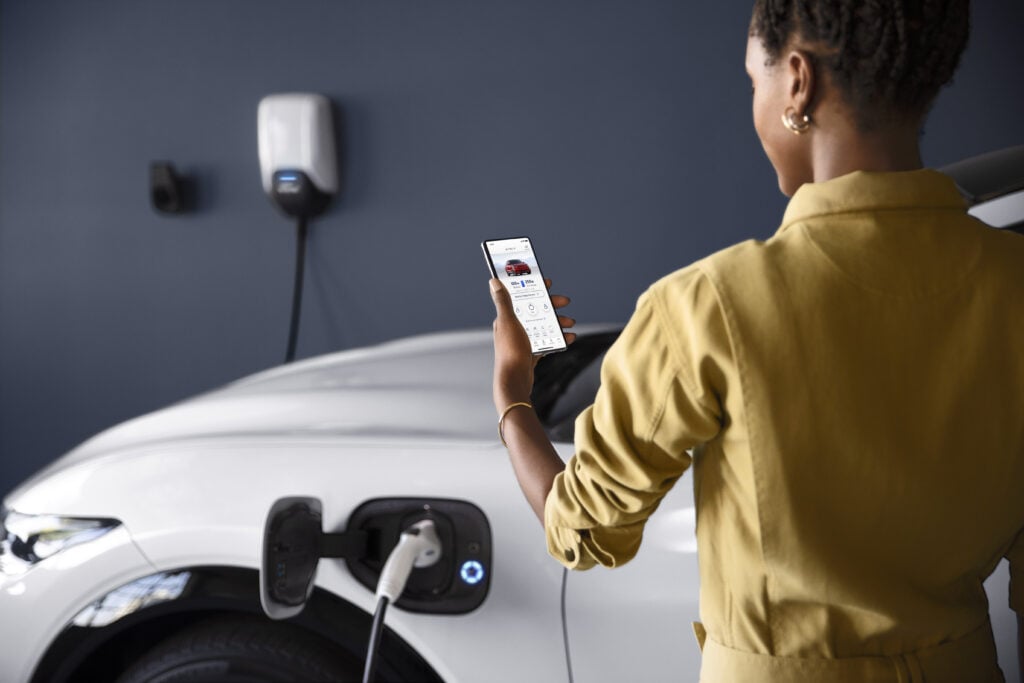
You know when your phone gives you a push notification about scheduling a time to install the latest software updates and bug fixes? Well, cars can do that too now. OTA updates are not just for software fixes. With OTA capability, vehicles can receive enhanced performance and safety improvements via a simple wireless internet connection.
OTA updates eliminate the need for making a service center visit for many simple fixes and updates. The updates are sent and downloaded via access to a cloud-based server with a wireless internet connection. Many updates are free of charge, and all safety enhancements are at no cost. However, we are entering a new era where OTA presents a new revenue stream for car makers.
Everyone’s getting in on the subscription business, and the auto industry is no different. There are two kinds of OTA updates: those for infotainment, and those for vehicle performance and control. They may target either software or firmware, the latter of which required more advanced security protocols to implement.
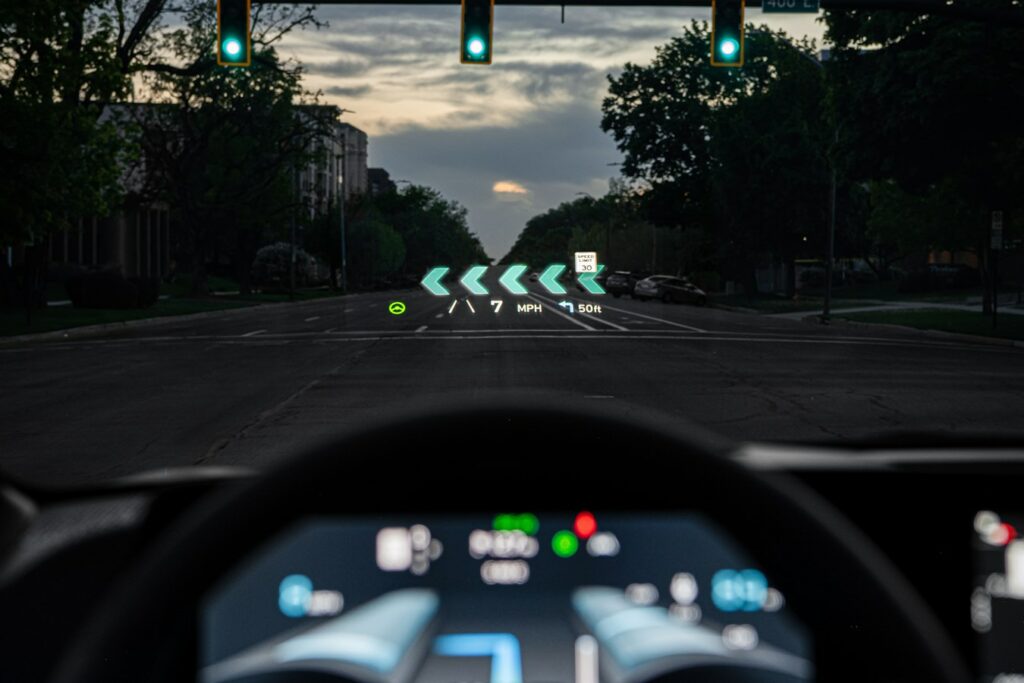
Infotainment updates improve the user experience. A classic example is how Volkswagen ID.4 owners are pleading for an improved infotainment performance after the original equipment was delivered with a laggy touchscreen and haptic buttons. Fortunately for ID.4 owners, the car is among VW’s first generation of OTA-capable models, and a fix is on the way.
Sometimes, OTA revisions cause frustration and even anger from customers. Tesla recently pushed the Version 11 user interface to all of it’s vehicles via over-the-air download. The result was strong critical feedback from customers, most of whom were complaining about the automaker trying to fix something that wasn’t broken.
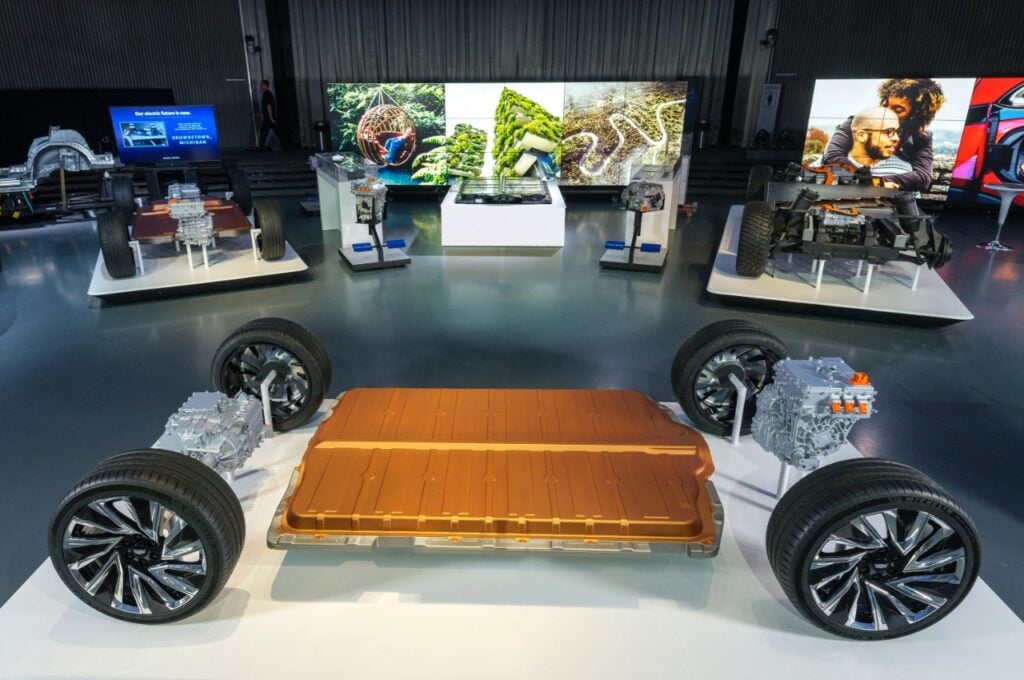
How is it that the 2023 Tesla Model 3 has a quicker 0-60 time now than it had when it was first purchased? Or how Tesla vehicles can gain or lose access to the controversially-named ‘full self-driving’ based on driver safety scores? With OTA capability, automakers can send everything from a power boost to a pedestrian avoidance feature to cars already in driver’s hands.
Vehicle performance and control updates can include updates to the vehicle’s powertrain, chassis systems, and advanced driver assistance systems (ADAS). Of course, updates to these critical components of a vehicle are only possible when the components are electronically controlled and operated. For this reason, an older car model can’t be retrofitted to become OTA capable.
Tesla was the first automaker to roll out over-the-air capabilities with the launch of the Model S in 2012. After years of skepticism from the competition, here are the other OEMs that have announced or commenced OTA updates in their vehicles:
| Automaker | OTA-Upgraded Components |
| Audi | Navigation |
| BMW | Infotainment, optional features |
| Ford | ADAS, several other components |
| General Motors | Nearly every vehicle component on EVs, major components on combustion vehicles |
| Honda | Infotainment |
| Hyundai | Infotainment, voice assistance |
| Jaguar/Land Rover | Infotainment, charging capabilities |
| Lucid | Nearly every vehicle component and system |
| Mercedes-Benz | Infotainment, navigation |
| Nissan | Infotainment |
| Polestar | Nearly every vehicle component and system |
| Porsche | Limited functions |
| Rivian | Nearly every vehicle component and system |
| Stellantis (FCA) | Infotainment |
| Tesla | Nearly every vehicle component and system |
| Toyota | Infotainment |
| Volkswagen | Several vehicle components and systems on EVs |
| Volvo | Nearly every vehicle component and system |
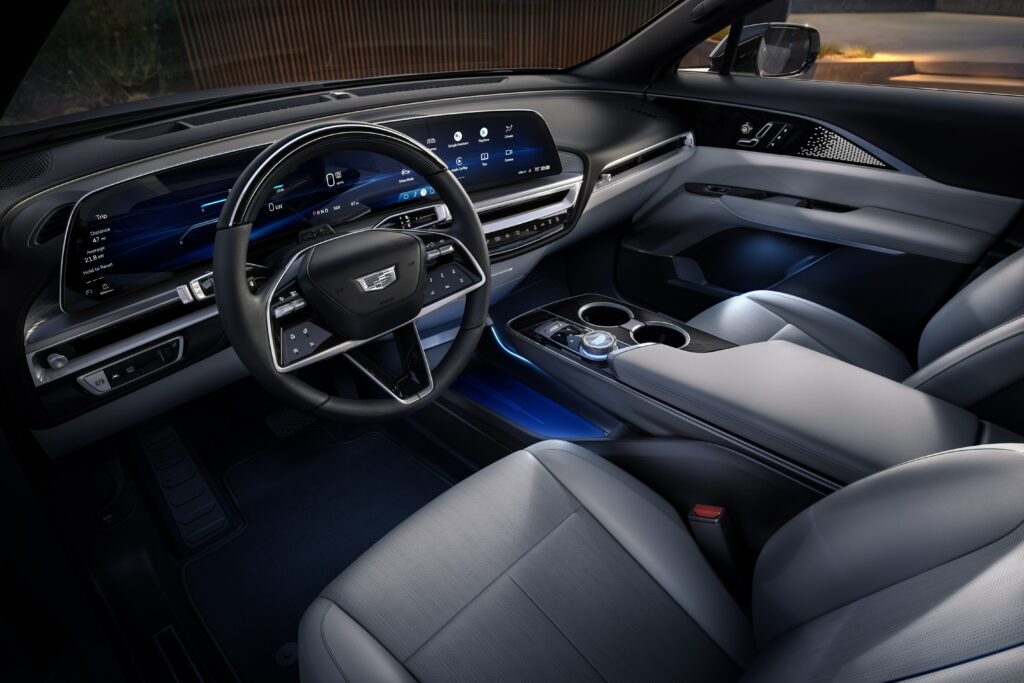
We’re used to having virus protection on our computers. If we don’t, bad guys will find a way to compromise the computer and access personal information. Are the same security and privacy concerns applicable to automotive OTA updates?
Since OTA updates require a wireless internet connection to install, there are risks for malware and the unintended release of personal information. The best way to protect yourself from these risks is to only accept OTA updates while connected to a secure network, such as the wifi network at your home. Don’t try updating your car at the fast food or coffee shop drive thru!
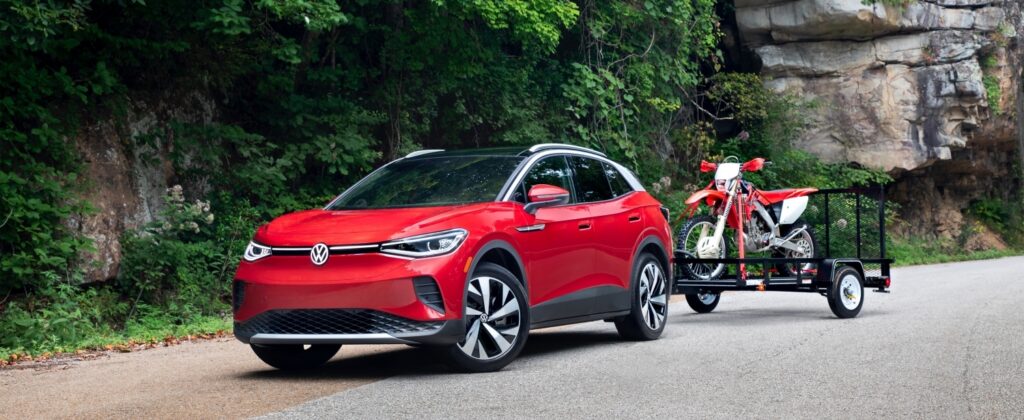
Over-the-air updates are about to take the auto industry by storm. Now that major OEMs are proudly marketing their ability to improve the user experience (which itself sounds like they’re selling more of a tech product than a car), a paradigm shift is at hand. Volkswagen Group CEO Herbert Diess recently told The Verge about VW’s plan for a reimagined future where the relationship between the automaker and customers is more intimate and dynamic with the power of OTA updates and new ways of customizing the ownership experience.
“Imagine: for a long time, we did not have access to a customer as a company. The customer access was exclusively with our retail network. What we experienced over time was that people walk away from our retail outlets and go to third parties to substitute some of the spare parts or buy new tires. Now, we have a new opportunity to be in direct contact with the customer, which is totally new for us.”
Not only is the largest automaker in the world committing to OTA capability, the likes of Ford, GM and even tech-cautious Toyota are joining the bandwagon too. Will OTA updates remain a free upgrade for millions of car owners? Unfortunately, that’s already slipping away. Tesla offers acceleration boost upgrades for its popular Model Y for $2,000, and Toyota recently tried making customers pay for remote start, a feature that is OTA-controlled.
Even the CEO over at Volkswagen Group acknowledges the new money-making avenues made possible by software updates, telling The Verge that eventually, customers will have to pay for what they want.
“We have that revenue in mind for sure as well. Customers will be prepared for some features they didn’t buy at the start, probably after a few years or after a few months — even if they consider taking another option or another software feature, the customers would be prepared to pay a monthly fee or a one-time expenditure.”
There are advantages and disadvantages of OTA update capabilities, but it seems that the advantages far outweigh any negatives that may come with this game-changing technology. As Tesla has shown the industry, there’s a future not too far away when most recalls may be fixed via a quick overnight update, and vehicles get better over time, helping them to retain resale value.
Are you ready to treat your vehicle more like a smartphone than a means of transportation? What do you think the outcome of this major industry shift will be for consumers, dealers and automakers? Will dealerships falter without the steady stream of vehicle service that they’re used to? Only time will tell.
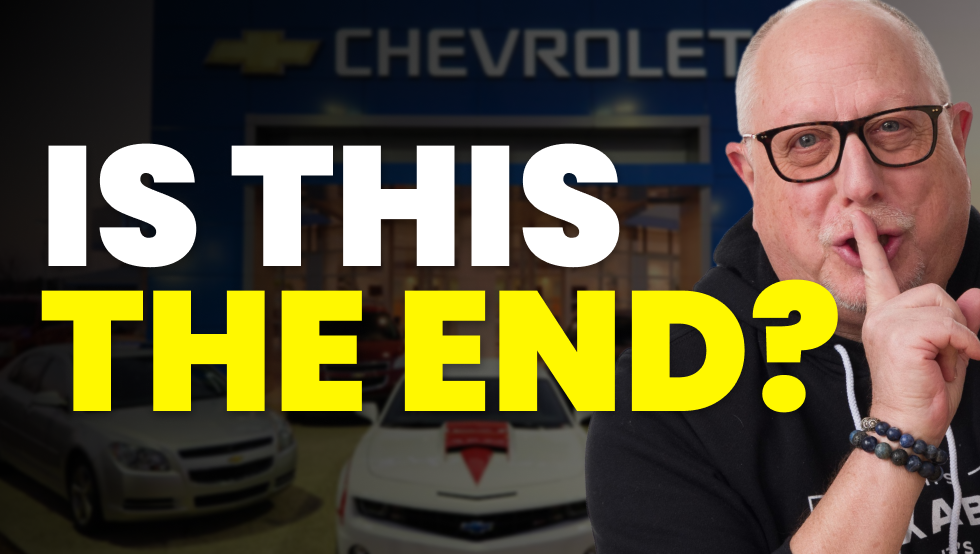
When my dad and I founded CarEdge in 2019 we knew that the way people bought cars was inevitably going to change. Our best guess was that the hassle of negotiating a car deal would stick around for another 20, maybe 30 years. We hoped that by then the price of a car would simply be the price of a car, and the “grind it out” nature of trying to buy an auto at a fair price would be long forgotten.
Well, I think we may have been wrong.
Over the past week, two memos have been leaked from major domestic automakers. One from Ford, and another from GM (screenshots below). Both of the letters are directed towards their dealer bodies, and they each make it clear: stop screwing around with customers and tarnishing our brand.
Could the beginning of the end of car dealerships be happening right before our eyes? I think the answer is a resounding “yes”.
Before we unpack the memos from Ford and GM, let’s take a trip down memory lane. Why do car dealerships even exist?
Reports vary, but the first car dealership was opened in either 1897 or 1898. Automakers of this era leveraged a variety of sales channels to sell their initial vehicles, dealer partners being one of them. These partners were exactly that; partners. Dealers were not owned and operated by the automaker, instead they were independent third party businesses that agreed to abide by rules and regulations put in place by the automaker.
Automakers loved this model. It was (and still is) highly profitable for them. They loved it so much that they lobbied state-by-state to pass “franchise dealer” laws that make it illegal for a vehicle manufacturer to sell directly to a consumer, instead they have to sell through a franchised dealer.
Traditional automakers are great at designing, manufacturing, and distributing their product. They are not interested in day-to-day customer engagement, setting up service appointments, or doing anything beyond building and selling cars to their dealers.
Automakers get paid when they wholesale a vehicle to their dealer partner. Then the dealer has to (no pun intended), deal with the end user. In this way, legacy automakers have been able to separate themselves from the expensive practices of customer engagement and instead pass that along to their dealer partners.
Why do car dealerships exist? Because automakers have been able to generate massive profits from this system. However, after 100+ years, it appears another model may potentially be even more valuable for them.
Tesla notoriously refused to sell their cars through dealer partners. Instead, the upstart EV automaker insisted on having their customers purchase directly from them. This is illegal in many states, however after lobbying for many years, most states now have “carve out” laws that allow EV manufacturers to sell directly to consumers.
Here’s example of that “carve out” language in Connecticut:
Would allow a manufacturer to receive a dealer’s license if it does not have a franchise agreement with a new-car dealer in the state, if it builds only electric vehicles and only sells the vehicles it builds, and if it does not have a controlling ownership link to a manufacturer licensed as a dealer in the state.
Nowadays EV automakers can sell direct to consumer in many states via the internet, and they are just starting to prove how lucrative this business model can be. Tesla, Rivian, and Lucid are shining examples of how valuable direct to consumer sales models can be. Tesla is a $1T+ company, and Rivian, even though they’ve only sold a few hundred vehicles is valued at north of $100B. Ford, GM, and other legacy automakers want to catch up. For perspective, Toyota, the highest valued traditional automaker, is “only” worth $330B.
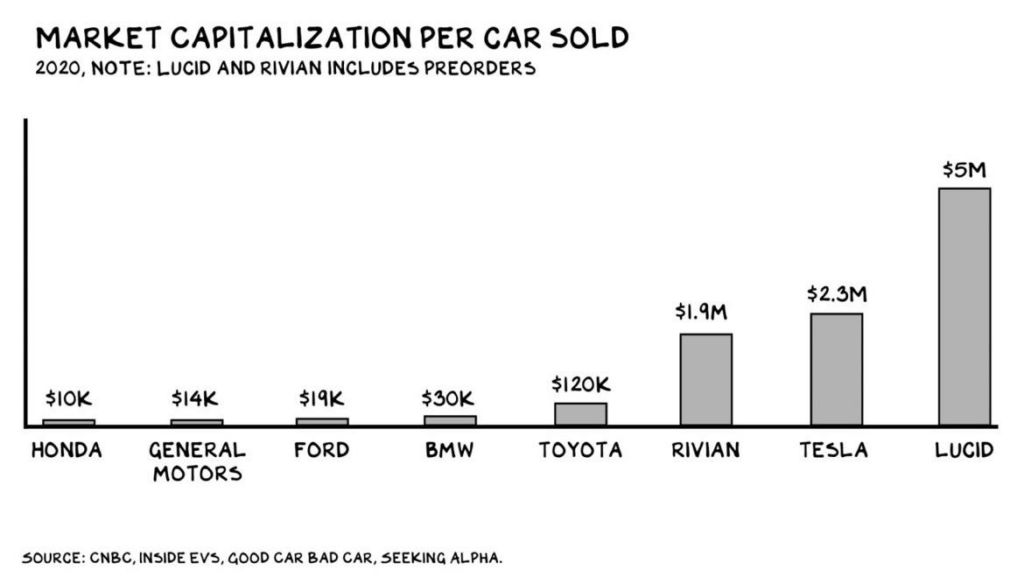
Within the past week both Ford and GM have sent memos to their dealers that say the exact same thing: don’t tarnish our brand, treat customers well, or lose allocation of inventory from us. These leaked memos represent the first attempt Ford and GM are taking to “stand up” to their dealers.
Both memos reference the dealership’s franchise agreement, and both make it clear that if the dealership does not treat customers in a way that enhances their brand, they will take away allocation of inventory.
Sure, these memos represent the first time we’ve seen automakers stand up to their dealers, and for that reason, we’re excited to see them, however the issue is, if GM or Ford actually tries to enforce their own rules they’ll certainly get taken to court. Why? Because nearly every Ford and GM dealership in the United States breaks their rules, so if they begin to selectively enforce the rules, you can be certain some dealer groups will fight back.
While the franchise dealership model has served automakers well for 100+ years, it’s clear as day that a transition away from that model is upon us. This transition won’t happen overnight, and we shouldn’t expect dealerships to simply vanish. Dealerships play a vital role in society, especially when it comes to vehicle repairs and maintenance, however it appears clear that Ford, GM, and many other automakers want to catch up to Tesla’s valuation, and one of the ways they’ll do that is by taking more control of the sales process.
Dealerships aren’t going anywhere anytime soon, but the shift away from the dealer model is happening 20 years earlier than we had imagined. It will be interesting to see how this market evolves, especially as Tesla and other EV startups continue to get praise.
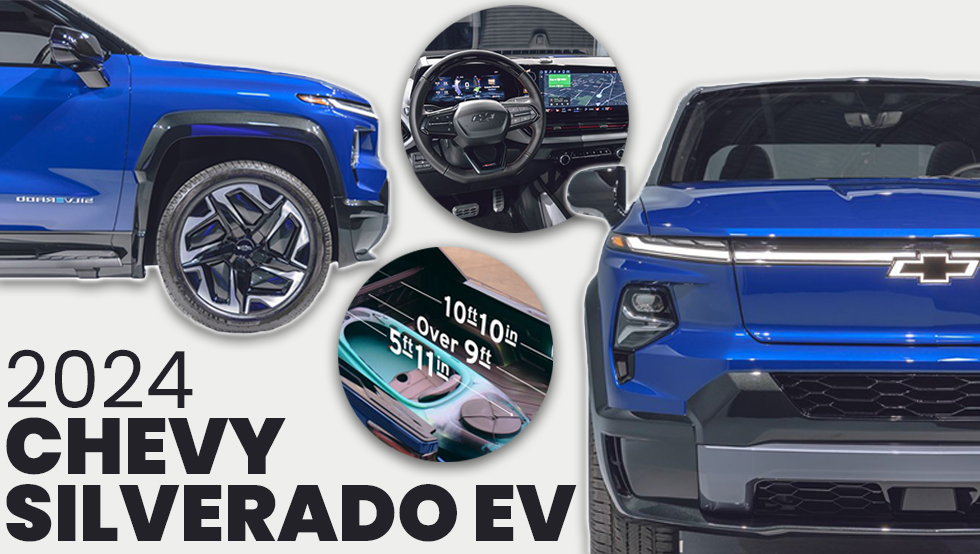
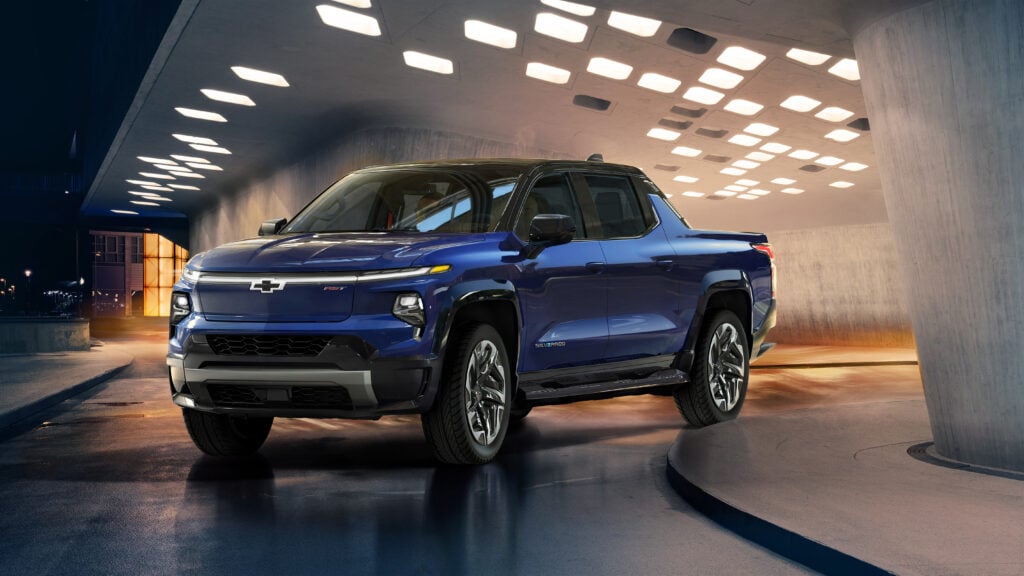
This year’s CES is full of EV headlines, from a Sony EV to Chrysler’s Airflow concept and much more. GM’s accelerated push into electric vehicles made news with multiple head-turning announcements at CES. Arguably, the unveiling of the 2024 Chevrolet Silverado EV is the biggest deal of all in an expo full of automotive gamechangers.
Although Tesla’s Cybertruck started the electric pickup conversation with the swing of a sledgehammer into a windshield in 2019, other automakers are much closer to bringing electric trucks (or dare I say e-trucks?) to market. The outdoorsy Rivian R1T has begun deliveries, and the GMC Hummer EV is crab-walking its way into customers’ hands. But these two premium offerings are a price point or two above what the majority of drivers can afford. Enter the Ford F-150 Lightning and its chief competition, the all-new Chevrolet Silverado EV.
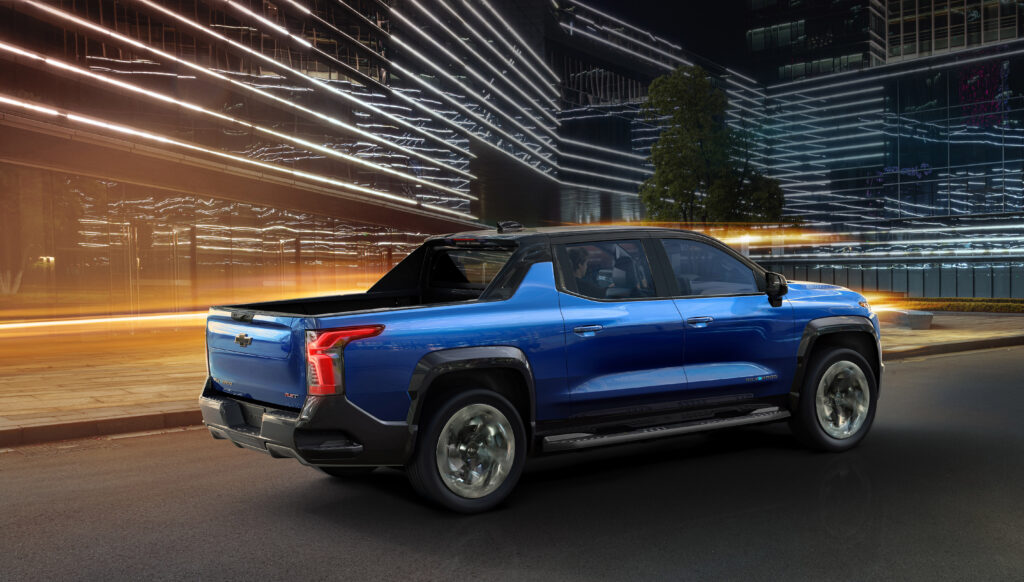
During the CES unveiling last week, General Motors CEO Mary Barra made it clear that the upcoming electric Silverado “can be what you need and want it to be”, as they put it. Those in need of a long-range electric work truck with 10 power outlets for tools and equipment will find what they need in the Silverado ‘Work Truck’ or WT. All trims will be Crew Cab designed with a 40/60 split on the second row.
For the truck-aspiring commuter or casual heavy-hauler, the boundary-breaking Silverado RST ups the ante and launches the MSRP to six figures. You could argue that the RST is closer to what the new Hummer offers than the WT version of the Silverado. Surveys of EV-curious consumers show that Americans are feeling uneasy about the switch from gas stations to charging infrastructure. The 2024 Silverado EV is out to change that, with up to 400 miles of range and true rapid charging capabilities.
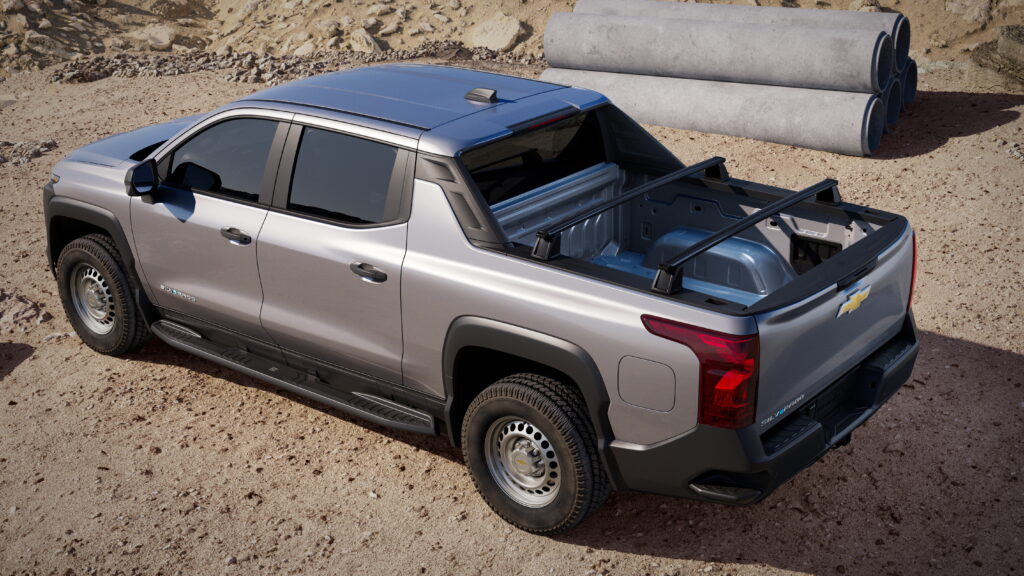
For now, Chevrolet only mentions a future with a “full lineup of Silverado EVs” that will include mid-level trims. The press release announcing the launch outlines plans to “unleash the full Silverado EV portfolio, including WT (with a starting MSRP of $39,900 + destination charges), RST, Trail Boss and more. Customers will have the ability to content the truck across various price ranges, with MSRPs around $50,000, $60,000, $70,000, $80,000 and more.” We’ll update this page as we learn more.
When GM first ventured into the world of electrification with the Chevrolet Volt in 2010, battery costs were about $1,000 per kWh. That meant that the Volt’s 16 kWh battery was the most expensive component of the car. Now, Mary Barra says that their all-new Ultium platform will be produced at less than $100 per kWh. To be frank, that’s a gamechanger for any legacy automaker, let alone one that has been plagued with battery recalls and outdated electric powertrains. The press release announcing Ultium didn’t beat around the bush, stating that “the first generation of GM’s future EV program will be profitable.”

What does the Ultium platform mean for the 2024 Silverado EV? Outstanding range figures, efficient electric motors and exceptional charging speeds will come standard. Chevrolet claims up to 400 miles of range, and 100 miles of added driving range in just 10 minutes at DC fast chargers. All OEMs partner with suppliers for battery (and combustion engine) components to some extent. GM’s engineers designed the Ultium platform, but LG will be in charge of making the battery packs for the time being. Despite the kerfuffle between the two corporations over LG’s Chevy Bolt battery debacle, it looks like the partnership is continuing. Besides, LG Chem is a respected battery supplier for Stellantis, Lucid and even some Tesla models.
In summary, the upcoming electric Silverado is charging full steam ahead in the race to dominate the electric pickup truck segment. Here’s what GM has shared with us so far:
| Trim (EV) | HP | Torque (lb-ft) | 0-60 mph | Offboard Power | Range (miles) | Charging Speed | Starting MSRP |
| Silverado WT | 510 | 615 | TBD | 10.2 kW | Up to 400 | Up to 350 kW | $39,900 |
| Silverado Mid-Trims TBD | TBD | TBD | TBD | 10.2 kW | TBD | Up to 350 kW | $50,000 |
| Silverado RST | Up to 664 | Up to 780 | 4.5 s | 10.2 kW | Up to 400 | Up to 350 kW | $105,000 |
When it comes to towing and payload, the Silverado EV is no slouch. GM says a future WT Max version will be capable of towing 20,000 pounds.
| Trim | Towing | Payload | Bed Size | Max Available Load Floor |
| Silverado WT EV | 8,000-20,000 lbs | 1,200 lbs | 5′ 11″ | TBD |
| Silverado Mid-Trims TBD | TBD | TBD | 5′ 11″ | TBD |
| Silverado RST EV | 10,000 lbs | 1,300 lbs | 5′ 11″ | 10′ 10″ |

The Silverado EV is packed with the latest technology, including an advanced software system that enables over-the-air updates, a feature popularized by Tesla that is quickly spreading among automakers. As a driver approaches the luxurious RST, a distinctive lighting animation greets them. Infotainment and driver information is presented on the RST’s large 17-inch screen, which is paired with a neighboring 11-inch driver instrument display. There’s also a driver head-up display with a field of view over 14 inches.
The RST includes trailer-capable Super Cruise, GM’s hands-free driver-assistance technology. Super Cruise works on more than 200,000 miles of compatible roads across the U.S. and Canada.
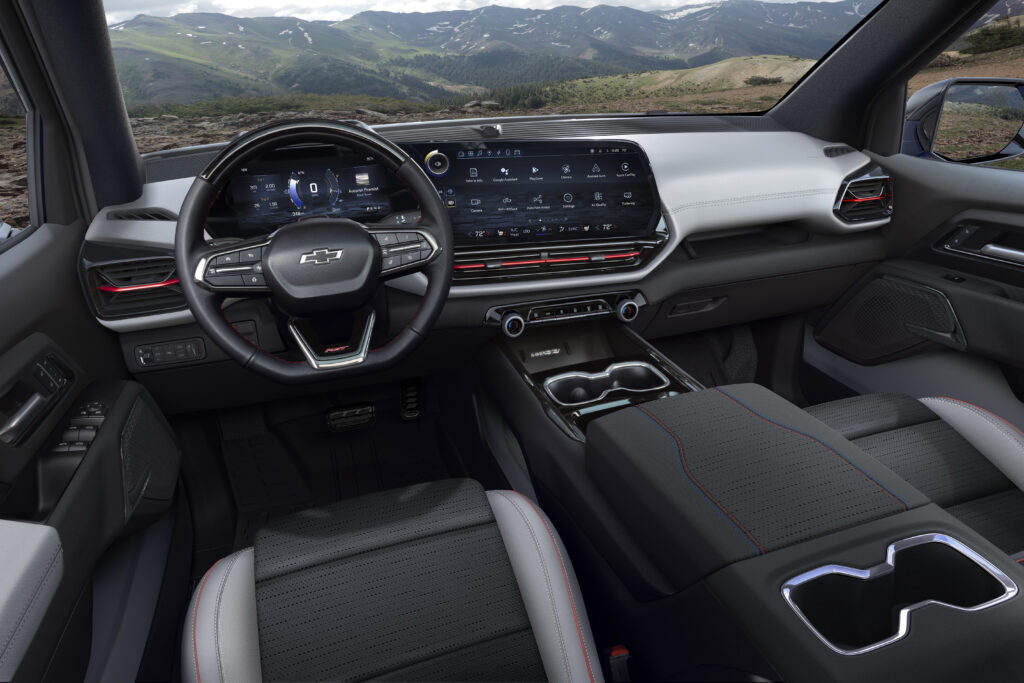
The 2024 Silverado will enter a crowding field of full-size electric trucks. What makes the Silverado stand out from the F-150 Lightning, Rivian R1T, GMC Hummer EV and the eventual Tesla Cybertruck?
This is outstanding, and it might even be too good. With the DC fast charging capabilities that come with the Silverado (see below), there’s hardly a need for more than 300 miles of real-world range. On the other hand, 400 miles of range makes the Silverado EV a great overlanding option for those who venture far off the beaten path. In all likelihood, Chevrolet will have quite the upcharge for the maximum range. Most trim options will most likely feature ranges in the 250-320 mile range. The Silverado’s main competitor, the Ford F-150 Lightning, is only capable of up to 300 miles of range on select trims. With the Ford, a minimum price tag of about $70,000 unlocks the max range.
All trims of the Silverado EV will be capable of super-fast DC fast charging at 350 kW speeds. In 2022, only the Porsche Taycan and Lucid Air are capable of such rapid charging. Soon, the Hyundai IONIQ 5 and Kia EV6 will join their ranks. Why then, is it ‘up to’ 350 kW charging? Not all public fast chargers are capable of such high outputs. The good news is that all new Electrify America charging stations are equipped for 350 kW. GM says that the Silverado will add 100 miles of range in just 10 minutes at such a powerful charging station. Of particular note, the F-150 Lightning will only accept 150 kW charging speeds. The Silverado has a clear advantage here.

GM says that the new Silverado is basically a rolling generator, if you buy the required accessories. “When combined with the available accessory power bar, the Silverado EV’s PowerBase charging system offers up to 10 outlets, to provide a total of 10.2kW of all-electric power for countless worksite or recreational needs, including powering your home, with the required equipment.” It can even charge other electric vehicles!
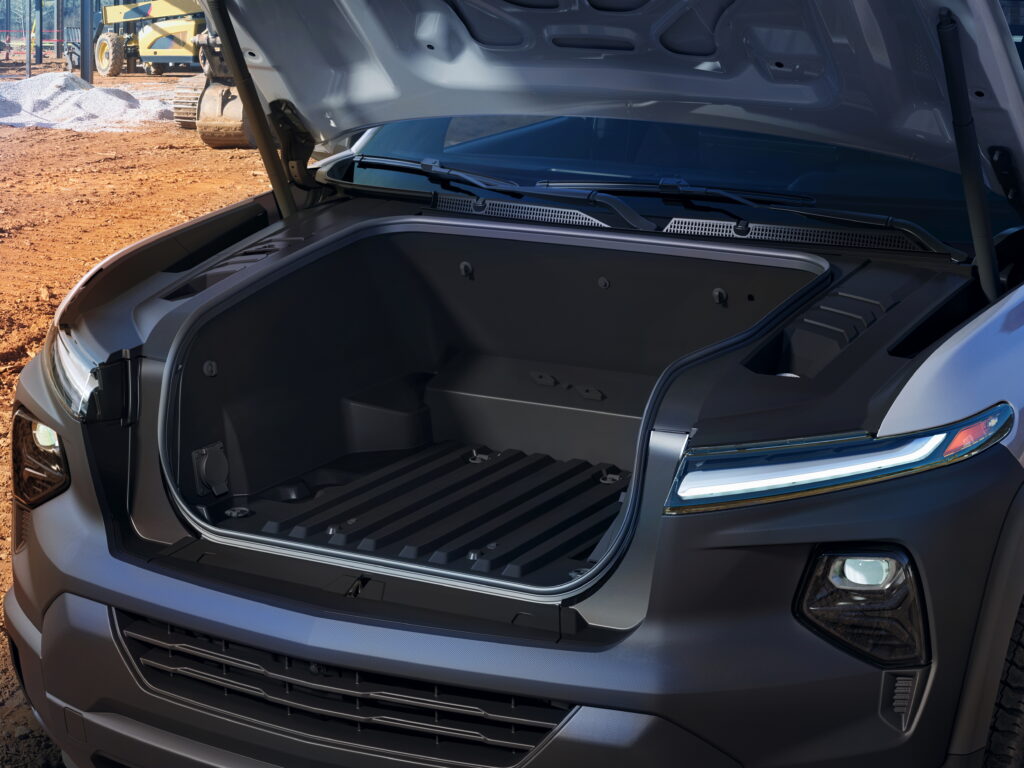
On the RST, the storage capacity of the 5-foot-11-inch bed is maximized thanks to the Multi-Flex Midgate, which provides just over 9 feet of storage between the cab and the tailgate when the Midgate is open. The Silverado RST EV has a noticeably larger bed than the F-150 Lightning’s 5.5 foot offering. But wait, there’s more! The Multi-Flex Tailgate enables up to 10 feet, 10 inches of load floor and storage capability. An available tonneau cover allows for fully lockable, weatherproof storage. Furthermore, there’s a sizable frunk (front trunk) that Chevy is calling the eTrunk.
GM has a plan for the rollout of the 2024 Silverado EV, so we’ll give it to you straight from the horse’s mouth.
“The Silverado EV will be assembled with domestically and globally-sourced parts at GM’s Factory ZERO, Detroit-Hamtramck Assembly Center — a facility repurposed and retooled with a $2.2-billion investment devoted to EV production.
In spring 2023, the Silverado EV will debut a WT model offering GM’s longest range battery with an expected GM-estimated range of over 400 miles on a full charge. In fall 2023, a fully loaded RST First Edition model, also delivering a 400-mile range, will debut with an MSRP of $105,000 + DFC. After production ramps up, Chevrolet will unleash the full Silverado EV portfolio, including WT (with a starting MSRP of $39,900 + DFC), RST, Trail Boss and more. Customers will have the ability to content the truck across various price ranges, with MSRPs around $50,000, $60,000, $70,000, $80,000 and more, allowing them to choose the truck that meets their capability and pricing needs.”
So there you have it. Availability is limited through 2023 or perhaps well into 2024. In fact, most EVs have limited availability through 2022, as we outlined for you in our recent article. The F-150 Lightning does have the advantage here, as it will be available starting late this year.

The upcoming electric Silverado looks to be a transformational truck with amazing range, power and flexibility. Plus, there’s a whole lot of luxury on the RST. Here’s what we’re keeping an eye on as your consumer advocates: Several of the neat features that Chevrolet touts are only available with the purchase of ‘accessories’. The following features require some sort of accessory or upgrade:
As you can see, the pricing structure may become a numbers game once Chevrolet starts shipping the Silverado EV to dealerships in 2023. Hopefully the available accessories are offered at a reasonable price.
The 2024 Chevrolet Silverado EV shows just how far legacy OEMs have come in their push towards electrification. GM has already committed $35 billion to electrification over the next decade, and their prized Ultium platform is looking like a real gamechanger. It’s exciting that we’ll soon see the result of their investments. What do you think? Is the electric truck segment about to get serious? Or were you hoping for lower prices and better specs? Let us know in the comments below, or better yet, join our CarEdge Community forum to connect with auto experts, consumers and fellow car enthusiasts.
We have thousands of EVs (and other vehicles) listed today. Each listing includes industry insights, empowering data and the true TotalPrice that will make buying a car the transparent process it should’ve always been. Check it out here!

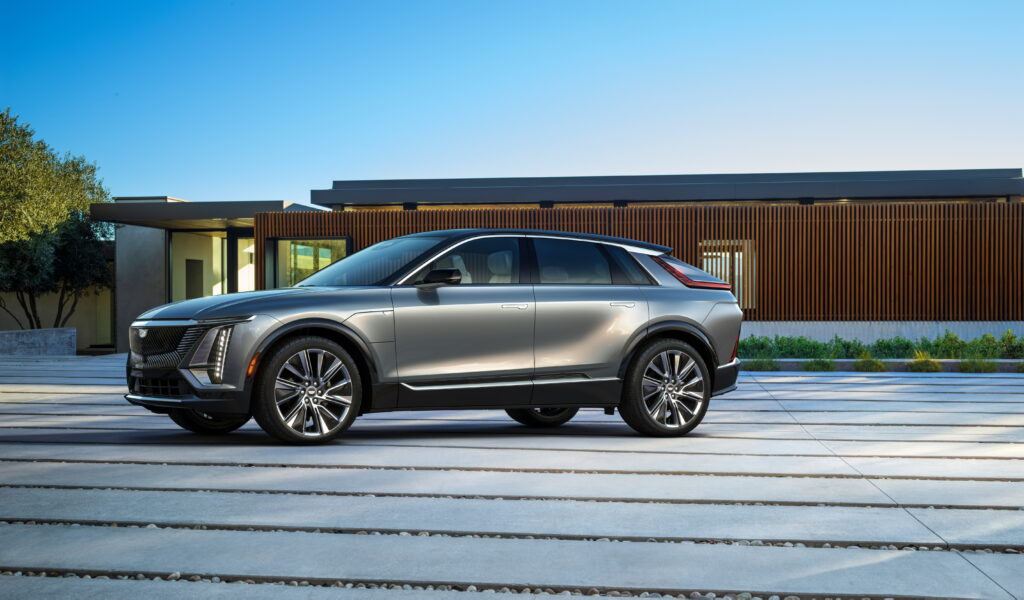
After five years of offering the Chevrolet Bolt as their flagship EV, the General is going all-in with EVs. Now, all eyes are on the next three electric models. The first has just begun deliveries, the $100,000+ GMC Hummer EV. And now, the 2023 Cadillac Lyriq luxury SUV is hitting the market, soon to be followed by the Silverado EV.
By 2030, Cadillac will be an all-EV brand. Other GM brands will follow suit by 2035. GM lost dozens of Cadillac dealerships nationwide after it provided an ultimatum requiring dealers to spend about $200,000 on EV upgrades, or withdraw from the brand altogether and accept a buyout. About one-third of Cadillac dealerships took the buyout, and GM spent a total of $274 million. At the end of 2021, just 560 Cadillac dealerships remained, down from 920 just three years prior.
Now that the dealership shuffle has settled, it’s prime time for Cadillac to unveil the first of its EVs. Deliveries of the Lyriq have just started, and production is ramping up. Here’s what we know about Lyriq pricing, range and more.

For starters, the Lyriq is a true SUV in size and stature. The outside has all the Cadillac design language you’d expect. Walking up to the Lyriq, you’re greeted by a welcome light show put on by the 50 LEDs illuminating the angular front grille. Stepping into the cabin, the first thing you’ll notice is the meticulous detail and labor of love, from the tree canopy inspired door illumination to the well-placed open-pore wood decor throughout.

If you lament the auto industry’s shift away from physical controls in favor of haptic feedback and touchscreens, you’ll be a fan of this interior. The Lyriq strikes the ideal balance of physical buttons and knobs and a healthy serving of touch controls. The 33” horizontal screen wrapping across the front dash may sound like the antithesis of physicality, but the screen and surrounding physical controls complement each other, making for an intuitive experience. The Lyriq’s 33” single screen is surprisingly similar to what you’ll find in the much more expensive Lucid Air, and more well-placed than the single 15” screen centrally located in the Tesla Model Y. A Cadillac-exclusive AKG Studio 19-speaker audio system provides excellent sound for audiophiles.
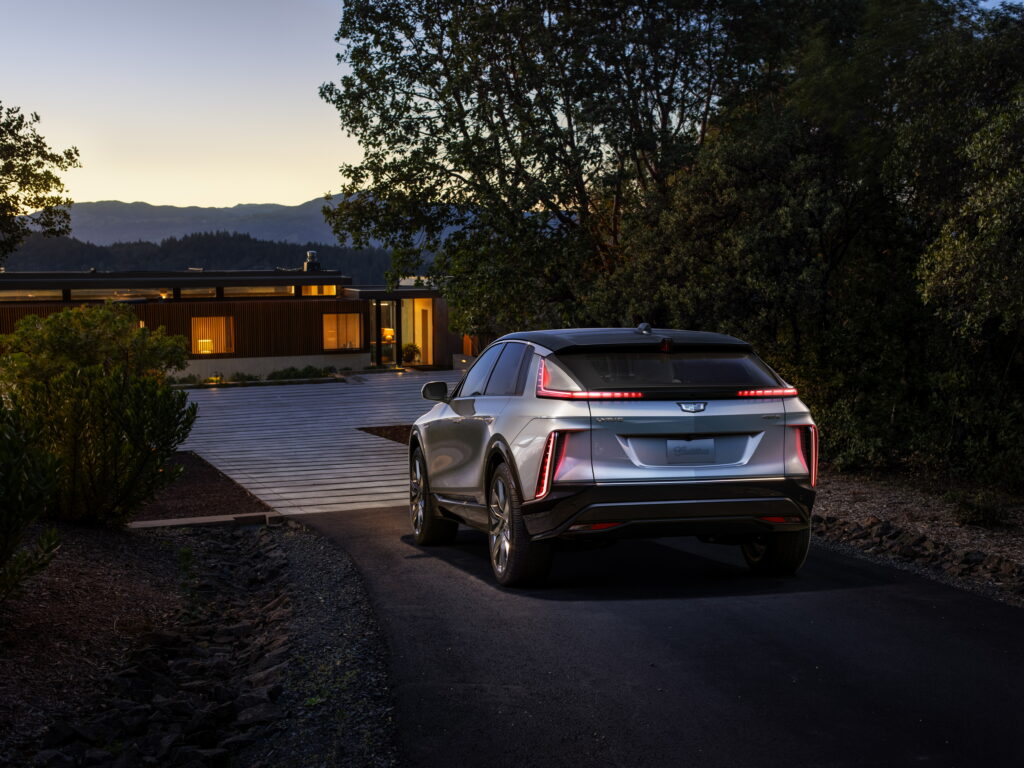
The Lyriq’s tech is all-around impressive. Super Cruise is at the heart of Cadillac’s Smart System suite of safety and driver assist features. Super Cruise supports hands-free driving on over 200,000 miles of North American roads. The ‘hands-free’ part is a big deal, as even Tesla isn’t yet ready to make that claim (and with good reason).
A popular feature of EVs is one-pedal driving. Most EVs allow for energy recuperation as the vehicle slows down. This is called regenerative braking. In essence, some of the electricity that was used to accelerate is recovered as the vehicle slows down, and is returned to the battery. But not all EVs are capable of strong enough ‘regen’ to make the brake pedal almost unnecessary, except of course during instances when hard braking is needed. The Lyriq has what looks like paddle shifters behind the steering wheel. These are the controls for regen strength. At the highway setting, the Lyriq will slow to a stop without needing the brake. Using regen on a daily basis takes some getting used to, but as Tesla owners can attest, it ultimately becomes second nature.
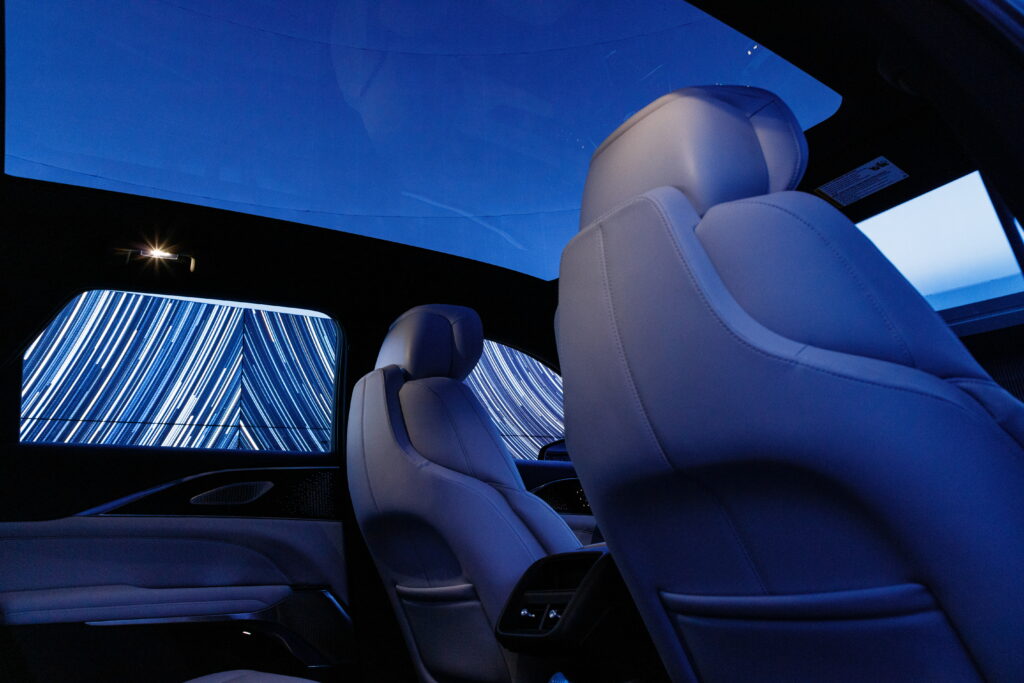
The Lyriq’s serene cabin is well-insulated and quiet with active noise cancellation. 8-way power driver and front-passenger seats with 4-way power lumbar, heat, ventilation and lumbar massage are all included with the 2023 Cadillac Lyriq. Rear passengers have access to dual USB-C charging outlets and a three-prong outlet for charging laptops and other larger devices.
Cadillac claims an expected EPA range of about 312 miles on a charge with rear-wheel drive. Considering the large size of the Lyriq and the rapidly growing charging networks, that’s more than enough for almost everyone. EVs are generally more efficient at lower speeds, so the Lyriq is likely to go well over 300 miles in city driving, and 250 or so on the highway.
When it comes time to charge, the Lyriq supports 190 kW fast charging at level 3 public chargers, like those you’ll find at Electrify America and Tesla Superchargers (if they ever open up to non-Teslas in America). This works out to about 76 miles of range in 10 minutes, or 200 miles in about 30 minutes.
At home, a level 2 charger can be installed into a 240 volt outlet like you’d use to plug in a dryer. This is where the Lyriq stands out above the charging competition. The Lyriq supports segment-leading 19.2 kW home charging, which can add up to 52 miles of range per hour of charge, or a full battery from empty in just six hours. To the uninitiated EV shopper, six hours might sound like a long time, but don’t forget that charging is done at night while you’re asleep. Most Lyriq drivers will wake up with a full battery every morning.

The 2023 Cadillac Lyriq will be the first time most consumers experience GM’s all-new Ultium electric platform. The 2022 Hummer EV is powered by Ultium, but it’s at a much higher price point that’s out of reach for most. Plus, it’s huge, and not everyone wants to drive a crab-walking boat around. GM’s engineers say that Ultium batteries are reliable, durable and more energy dense than anything we’ve seen before in a production EV.
Cadillac claims an EPA range of around 312 miles on a single charge made possible by the Ultium platform’s new chemistry. The public hasn’t forgotten about the ongoing Chevrolet Bolt recall and fire hazard, so it’s comforting to know that all new GM EVs will be built with a completely revamped and improved battery and electric motor architecture.
The 2023 Cadillac Lyriq is powered by a 12-module, 100 kilowatt-hour Ultium battery pack and a rear-wheel-drive Ultium Platform. This powertrain delivers 340 horsepower and 325 lb-ft of torque. It’s no Tesla, but a performance-oriented Lyriq is rumored to be on the way in 2023. For you speedsters out there, official 0-60 times haven’t been released yet, but considering that it weighs 5,610 pounds (over 1,000 pounds more than a Tesla Model Y!), the 5.0 second range is a likely figure.

The Lyriq Steps Into a Crowded SUV Segment that was essentially nonexistent just five years ago. One thing that may lure shoppers towards the Lyriq is its size. It’s larger than the Volkswagen ID.4, Tesla Model Y and Ford Mustang Mach-E. Thanks to the compact electric motors, the wheelbase is on par with a Hyundai Palisade, even though the interior volume is a bit less at 105 cubic feet. That’s more than the Model Y and VW ID.4, but just a cubic foot less than the much more affordable Hyundai IONIQ 5. Rear passenger leg room is generous at 40”. Everyone seems to offer a panoramic glass roof these days, and the Lyriq is no different. But the glass roof helps head room stretch to 38” for rear passengers.
Cargo volume is solid, even though there’s no frunk (front storage). There’s 28 cubic feet with seats up, and 68 cubic feet with seats laying flat. Even though that’s about the same as the ID.4, Model Y and IONIQ 5 (the Kia EV6 and Ford Mustang Mach-E are significantly less), the Cadillac Lyriq has something that none of the others have: the very essence of luxury. Better comparisons could be made with the Audi e-tron, Tesla Model X, the brand-new BMW iX, and the soon-to-arrive Genesis GV60 and Mercedes EQB. Among these competitors, the Lyriq is likely to remain more affordable.
The base Luxury trim of the Lyriq is nearly loaded as-is. The Luxury comes with 19” aero wheels versus 22” rims for higher trims, but Cadillac hasn’t shared many additional details other than that the base trim features all of the biggest perks. Reviewers who’ve had showroom tours of the Lyriq have been told that the base Lyriq has all of the above. The debut edition starts at right under $61,795 with rear-wheel drive. All-wheel drive Lyriq variants start at $64,000. Higher trims are expected to reach well above $70,000.
See Lyriq pricing details at cadillac.com.
Pre-orders are now open! Expect to wait several months for your Lyriq to arrive. It should be worth the wait.

We have great news for those counting on federal EV incentives to bring the Lyriq EV into their price range. The Lyriq is going to be built in Tennessee with American-made Ultium batteries, so it will qualify for the new EV tax credit. Of course, you’ll have to ensure that your household income qualifies.
Learn more about the revised EV tax credit’s requirements.
The base spec of the Lyriq offers a whole lot for an MSRP of 60 grand. Could the Lyriq be the new anti-Tesla? Tesla may be the leader of EV sales for now, but for car buyers yearning for less minimalism, more luxury and competitive pricing, the Lyriq sure works out to a great deal. One thing the two share is that both GM and Tesla no longer qualify for the EV tax credit. Revisions to the EV tax credit are pending, but nobody really knows what the outcome will be.
The Lyriq is looking like a great flagship for GM’s new Ultium battery and powertrain platform. An expected 300+ miles of range and rapid charging make this electric SUV competitive from day one.
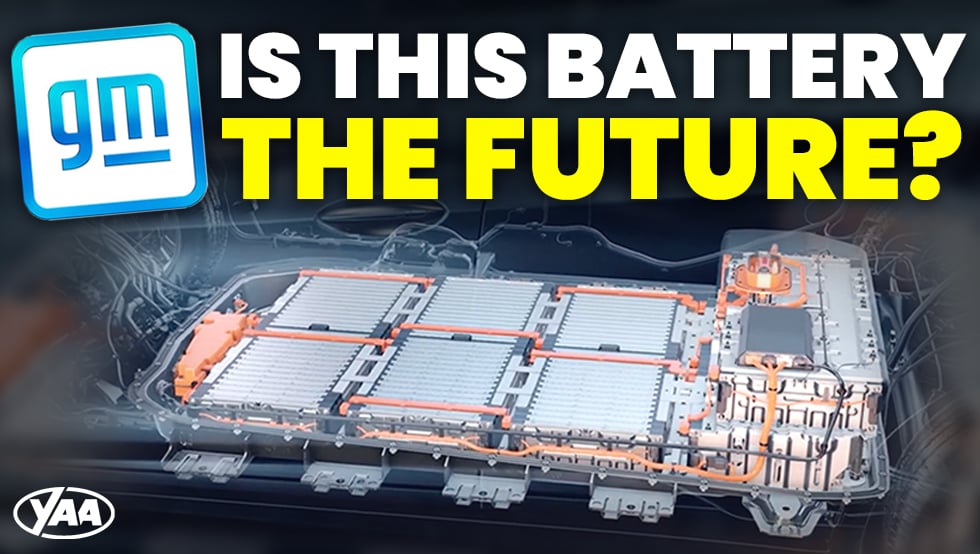

When GM launched its first plug-in hybrid in 2010, the Chevrolet Volt, turning a profit was an uphill climb. It was a time when EVs were a pipedream to most OEMs. Nissan was nearing the launch of the Leaf, the first fully-electric mainstream vehicle ever. Tesla was a nascent startup raising funds by selling the first-generation Roadster. Automakers old and new alike knew that if EVs were to ever become affordable for the masses and profitable for OEMs, the costs of battery production would have to plummet, and battery efficiency and durability would have to increase.
Here we are 12 years later, and GM is ready to launch its first vehicles powered by their all-new Ultium battery platform and propulsion system. Is the platform a technological leap forward? Could it be the key to dethroning Tesla, or is GM after something different altogether? Here’s the latest on what GM claims is the game-changer for mass electrification.
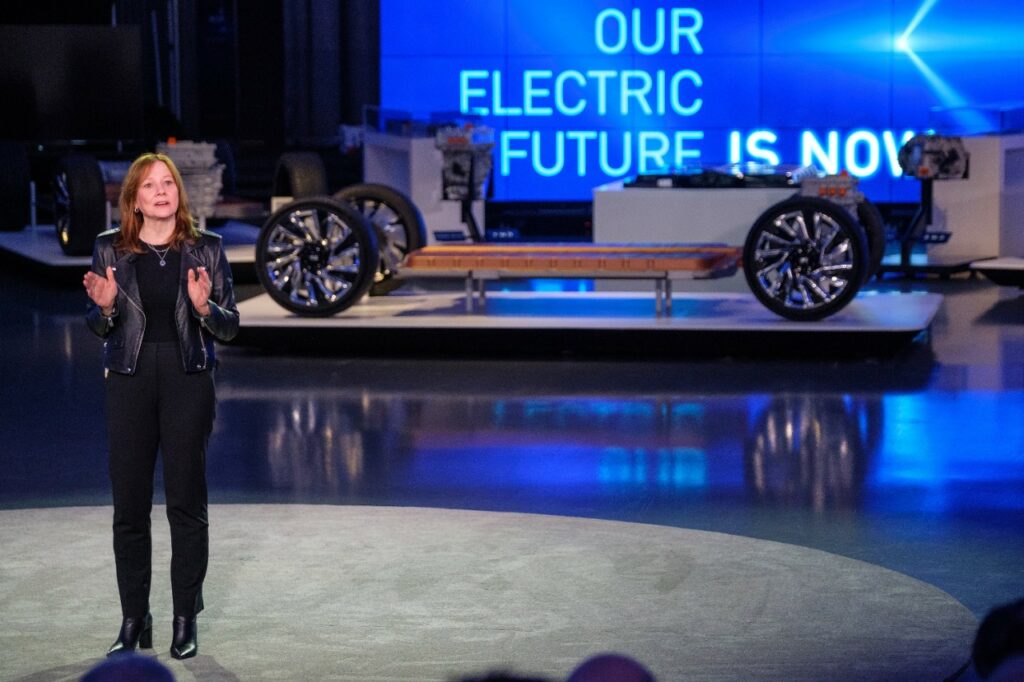
When GM CEO and chairman Mary Barra announced the Ultium platform in March of 2020, there was a lot going on in the world that overshadowed the gravity of her announcement. However, the automotive industry noticed GM’s confidence in its ability to overcome one of the biggest barriers to affordable EVs: battery production costs. Battery capacity is most often measured in kilowatt-hours (kWh). For reference, a plug-in hybrid like the 2011 Chevrolet Volt has a smaller battery, 16 kWh in this case. Today’s popular EVs like the Tesla Model Y, Ford Mustang Mach-E and Volkswagen ID.4 have battery capacities in the 70-80 kWh range.
At the time of the Volt’s launch in 2010, battery costs were about $1,000 per kWh. That meant that the Volt’s 16 kWh battery was the most expensive component of the car. Now, Mary Barra says that the new Ultium platform will be produced at less than $100 per kWh. To date, only Tesla has been known to have reached such battery affordability, and it’s been considered a key ingredient in their secret sauce for success. The press release announcing Ultium didn’t beat around the bush, stating that “the first generation of GM’s future EV program will be profitable.”
Plenty of automakers have ambitious, expensive plans for electric vehicles, but if GM is already there in 2022, are we witnessing a major disruption to the EV segment in real time?
They’re not going it alone. In fact, all major OEMs partner with battery producers to produce their EVs, from Tesla to Ford. In this case, GM is continuing to work with LG Chem for Ultium development and production (which has already begun). LG Chem is a respected battery supplier for Stellantis, Lucid and even some Teslas.
What could go wrong? You’ve heard about the Chevy Bolt battery fires that have resulted in recalls, stop-sales and $2 billion in expenses for GM? LG Chem supplied those batteries too. LG recently agreed to cover the massive costs of the Bolt recall, perhaps in a last-ditch effort to preserve the business partnership between the two.
The automotive industry usually welcomes second chances (remember the Great Recession bankruptcies, VW’s Dieselgate, etc.?), so let’s hope LG and GM’s partnership results in a great electric platform, one that’s far less flammable this time around.

GM says its all-new global platform is flexible enough to build a wide range of trucks, SUVs, crossovers, cars and commercial vehicles all with the same Ultium architecture. They call it a one-size-fits-all approach to electrifying all GM brands by 2035. At the heart of the Ultium platform is a pouch-type of battery module. This is where scalability becomes easy, at least in the eyes of GM’s engineers. Ford and GM are among the legacy automakers who continue to develop pouch-type battery modules, while relative newcomers like Tesla, Lucid and Rivian are using cylindrical batteries in their vehicles. It will be interesting to see which form factor becomes the dominant battery architecture over the coming years.
The new Ultium battery from GM uses a state-of-the-art Nickel Cobalt Manganese Aluminum (NCMA) chemistry, which was designed to reduce the cobalt content in our batteries by more than 70 percent. Cobalt mining in Africa is notorious for human rights abuses, so the battery industry as a whole is looking to reduce reliance on the element.
In the announcement for the new Ultium platform, GM didn’t hide the fact that they see battery production as a new source of revenue. Vertical integration of most vehicle components has been one of Tesla’s most influential strategies in the auto industry. Now GM leadership sees the value of cutting out the middleman (to an extent). “By vertically integrating the manufacture of battery cells, the company can reach beyond its own fleet and license technology to others,” reads the March 2020 announcement. They also tout their ability to leverage existing facilities and equipment for Ultium battery production.
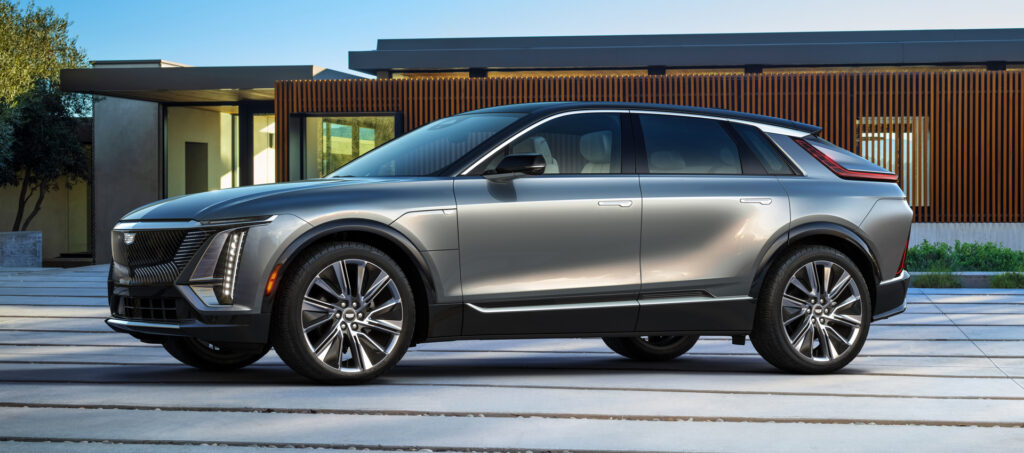
The first generation of Ultium-powered vehicles is already arriving at dealerships. GM just shared the first customer deliveries of the resurrected GMC Hummer EV, a 1,000 hp crab-walking luxury electric truck. In case you’re keeping track, both Rivian and GM have delivered the first electric trucks in America before Tesla has started production of its Cybertruck.
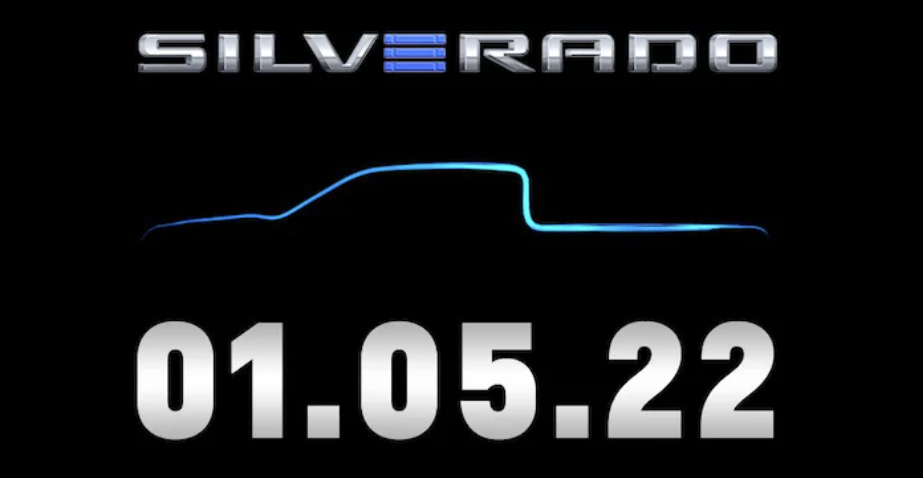
Soon to follow will be the 2023 Cadillac Lyriq electric crossover (starting MSRP of $60,000), which will hit the road in 2022. The real test of the Ultium platform’s market strength will be the Chevy Silverado EV. Electrifying one of GM’s best-sellers is a bold move. We don’t know much about the electric Silverado yet, but GM will unveil the truck on January 6, 2022 at the CES expo in Las Vegas.
GM plans to stop selling combustion vehicles by 2035, so a LOT more Ultium vehicles are surely in the making. Cadillac will be exclusively electric by 2030, a mere eight years ahead. What’s next, an electric Camaro?
Execution is key for GM. We learned in 2008 that no automaker is too big to fail, and a Bolt-like battery blunder can’t happen with the new Ultium platform. Hopefully GM and partner LG Chem have taken the time and due diligence to get it right. It remains to be seen if GM will price its vehicles competitively.
The 2022 Chevy Bolt and Hummer EV are worlds apart in terms of affordability. In fact, the Bolt and Nissan Leaf are the only two popular EVs that typically sell for under $40,000. Will EVs forever be mostly $40k-plus models, or will American soon have Ultium-powered economy options to consider. Only time will tell if consumers are willing to spend Tesla money on a GM EV in 2022. About 641,000 employees work for the big three American automakers (GM, Ford, FCA/Stellantis). With so much money, investment and infrastructure on the line, we sure wish for their success.
We have thousands of EVs (and other vehicles) listed today. Each listing includes industry insights, empowering data and the true TotalPrice that will make buying a car the transparent process it should’ve always been. Check it out here!